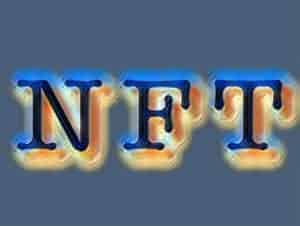 NFTs have become quite popular with a diverse group of consumers including professional NBA athletes like Stephen Curry and even former heavyweight boxing champion Mike Tyson is talking about these digital collectibles.
NFTs have become quite popular with a diverse group of consumers including professional NBA athletes like Stephen Curry and even former heavyweight boxing champion Mike Tyson is talking about these digital collectibles.
NFTs have quickly become the most-widely discussed topic in the crypto space. Even though hardcore Bitcoin maximalists (those who believe only Bitcoin is the superior form of valuable digital assets) might discourage people from exploring NFTs, the fact is that there’s a lot of value that can be found by leveraging NFT technology, which is largely based on blockchain or distributed ledger tech (DLT).
Throughout human history, people have always been fond of collecting items they perceive to be valuable. Most of us know about sports enthusiasts collecting rare Babe Ruth baseball cards or those iconic Michael Jordan cards. But these are more traditional forms of (physical) collectibles. They’re definitely going to remain valuable for a long time, however, NFTs or non-fungible tokens aim to offer something that’s arguably much better.
With NFTs (which can’t be exchanged for each other since they’re non-fungible), you can actually prove, with advanced cryptography, that each virtual collectible is unique or one-of-a-kind. Oftentimes, physical cards or other traditional collectibles can be fake and it can be hard, if not impossible for the average person, to detect a fake card from a genuine one. For this reason alone, blockchain-enabled NFTs can achieve mainstream adoption.
According to data from Nonfungible.com, 50,000+ NFTs valued at $146 million were sold during the past 3 months.
A NFT on a blockchain is a provably unique cryptocurrency token that may be used to store virtual assets. The dramatic rise of NFTs has been “a boon for digital artists and creators but, questions have been raised about the value of digital assets as they can be copied,” according to the developers at Hoard Exchange.
The Hoard Exchange team writes in a blog post that crypto-assets may be duplicated, however, NFTs give users something that “no one can copy:” As explained by the Hoard team, NFT technology is designed to offer “proof of ownership.”
With NFTs, holders or traders get an opportunity to truly own their crypto-assets and trade them with others on many different marketplaces.
As noted by the Hoard team, human beings were basically hunter-gatherers a very long time ago, which was well before the advent of modern civilization. Our ancestors survived by gathering food items and other essentials. Obviously, things have changed quite a bit now.
The Hoard Marketplace enables investors to trade, purchase, sell, loan, and even rent non-fungible tokens (NFTs), such as in-game items, virtual art, and domain names. Hoard plans to empower application developers with the appropriate infrastructure to integrate game items with the Ethereum (ETH) blockchain. Users are able to enjoy a more intuitive developer-player interaction and explore new NFTs.
Founded in 2018, Hoard is currently majority-owned (95%) by one of its founders (Imapp). The firm had owned 10% of Hoard “upon founding.” The Hoard team plans to develop the platform so users are able to own and govern it in the (distributed autonomous organization) DAO model.
HRD is the platform’s native token. The total supply is capped (for now at least) at 1 billion, with 48% “set to be distributed to the community.” Token holders are able to transact, stake to receive compensation, and are able to cast their vote.
On decentralized or non-custodial exchanges, token holders may become HRD liquidity providers. A token sale and staking (unless the community decides otherwise) are the “initial sources of income.”
Hoard’s competitors include platforms that support NFT transactions, such as nftfi.com and opensea.io. DeFi lending platforms are also considered competitors.
Hoard claims that it stands apart from its rivals by providing more affordable fees, special benefits for token holders, and a set of services and options for transactions. Hoard’s management notes that they aim to focus on the platform’s UX experience and will be working on adding a Layer-2 solution, along with new Marketplace functionalities
Hoard’s management also mentioned that they’re currently focused on lending, borrowing, and staking services. Borrowers are able to use NFTs as collateral in order to apply for loans. Loans are “paid off based on parameters set by the lender, who lends funds after choosing a submission they like.”
Those who hold stablecoins and want to make profits can also choose to serve as a lender on Hoard. The platform allows lenders to have their money or funds “work for them” and offers key opportunities to acquire an NFT they want (if there’s a foreclosure). The lender will get the NFT used as collateral after a loan isn’t repaid on time.
Hoard users who might own ERC-20 and ERC-721 compliant tokens and want to increase returns may leverage their digital assets as collateral. Borrowers are able to deposit their NFTs into the Marketplace protocol and “set a minimum loan value.” If a borrower “repays the loan before the due date, any funds increased by interest go to the lender’s account,” the Hoard team explains. The NFT used as collateral “moves to the borrower.”
Users looking to invest into HRD and take advantage of financial returns have the option to stake. Staking fees are “paid on tokens with strong liquidity like stablecoins,” the platform’s developers explained.

